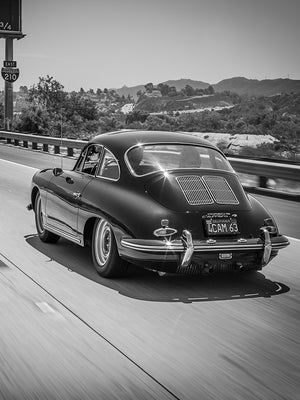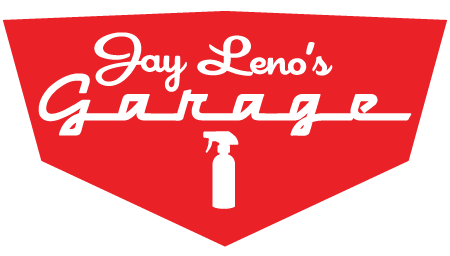Picture this - you did a full-blown detail on the car or truck last weekend, and then drove it to a Sunday morning cars & coffee event. You had a great time with friends/family, got lots of compliments on how clean your ride looked, maybe cruised around a bit after the show. Once you got back home, you realized that you picked up a little bit of road dust, maybe even some water spots on the rocker panels from the puddle you tried to avoid, but still drove through anyway. The car (or truck) isn’t filthy, but it definitely isn’t as clean as when you first finished the original detail. But what’s the best way to get it looking right again without having to break out the hose, bottles, tools, buckets, and re-doing all the hard work you just finished a few days ago? This is potentially a prime opportunity to employ a waterless wash.
We know, we know! A waterless wash?! “Won’t that scratch my paint?”
“Should I just pull out the hose & bucket?”
“What’s the difference between a waterless wash and a quick detailer?”
“When is it safe to use a waterless wash?”
“How dirty is too dirty?”
These are just a few of the questions we get asked when it comes to the topic of waterless wash solutions, and we get it. There’s a lot to be skeptical about, especially when you consider the consequences. You’re potentially dragging dirt & grime across your paint and by doing so you may be digging in shine-killing swirls & scratches. With the stakes so high, you certainly want to take the proper precautions and determine when/how to use a waterless wash safely & effectively. In this post we want to arm you with the knowledge necessary to make the correct assessment and help you choose the right tools for when your car or truck needs a quick re-fresh.
Let’s start by determining what a waterless wash is. A waterless wash is typically a sprayable solution that is designed to safely break down and clean moderately dirty painted surfaces. They are meant, in appropriate situations, to take the place of a hose & bucket wash – hence the name. They are an excellent cleaning tool in situations where access to water is limited. Maybe you live in an apartment complex and don’t have access to a hose bib. Maybe you live in a colder climate, and the current weather conditions aren’t necessarily conducive to spending an hour in the elements washing your car. Maybe you’re cleaning a car that simply can’t get wet. Whatever the situation might be, we view waterless washes similar to how we view a crescent/adjustable wrench: it may not be the first choice you reach to or think of, but when you’re in a bind they can come in pretty handy.

Waterless washes often get confused with general detailing sprays, and that’s understandable. The two are roughly similar in the sense that you spray them on, and wipe them off. However, there are distinct differences between them. It primarily boils down to how dirty or clean your paint is. General detailing sprays are meant to be used on clean paint that needs a quick gloss enhancement. Maybe you need to clean up some smudges left over from waxing, random fingerprints, or some very light dust from the car sitting in the garage for a couple of days. Anything past that you’ll want to start considering a waterless wash.
Where a waterless wash differs from a detailing spray is in the emulsifiers and lubricants blended into the chemistry. Waterless washes are designed to break down dirt/grime deposits, and sufficiently lubricate those dirt particles enough so your towel can safely wipe them away from the surface without leaving scratches behind. However, there’s a limit to how dirty a surface can be before the limits of the emulsification and lubrication properties are reached. This is where the assessment and judgment call are left up to the individual tasked with cleaning the paint.

Jay recently had his 1936 Cord 812 out for a drive, and when it came back it had a layer of light dust on the surface. See the image below of the dust & road grime that had settled on the car. This is just about at the limit in which we'd be comfortable using a waterless wash.

Our suggestion is to always air on the side of caution. If you’ve got big clumps dirt, debris, or environmental “fallout” then we’d suggest the route of the hose & bucket treatment. But if the surface is only moderately dirty, and you feel confident that the particles on the surface can safely be picked up by your towel without causing damage, then the waterless wash will be your best friend.
Given the delicate nature of this specific car, we had to look at the options available to us to clean it. The Cord is not a car that you can just turn a hose loose on and drown it in water. There’s a lot of vents and areas where water can make its way in, get trapped and ultimately cause a rust/corrosion issue. Because of this, we decided JLG Eco Wash, our own waterless wash solution, was the best option available.

Once you’ve made the decision to utilize a waterless wash, you want to make sure you’re using it properly. First & foremost, you’ll want to make sure the vehicle is parked in a shaded area and that the painted surfaces are cool to the touch. (You’ll notice the Cord is parked outside in the images we’re sharing – we want to note that this cleaning took place on a cool, Spring day, and the surface temperatures of the paint were safe to work on.) You’ll also want to use ample amounts of cleaning solution. The idea here is to use as much lubrication as possible, so don’t be shy when spraying it on the surface.

How you use your microfiber towel is arguably the most important step to safely using a waterless wash and not leaving scratches and/or swirls behind in your paint. The key here is to fold your towel into small sections, and then wipe in a single direction. It’s very important to avoid circular or back & forth motions at this stage of the cleaning. As you’re wiping, you’ll want to roll the leading edge of the towel up and away from the surface. This technique will ensure you’re using a clean section of the towel as it continues to move across the surface and accumulate dirt & debris. See the image below – this is how soiled the towel has become after one small section of wiping.

That brings us to the next topic – what type of towel should you be using. We prefer to use a waffle-weave style towel when using a waterless wash. The waffle pattern provides deep pockets for dirt to be absorbed into and lifted away from the surface. This gives us the best chance of safely cleaning the surface without leaving scratches or swirls behind.
As you’re ready to move on to the next area of the vehicle, make sure you’re constantly flipping/folding your towel to a fresh, clean section. If you’ve got a large car or truck to clean, it would make sense to have multiple towels ready and available. Because some waterless wash solutions may be slightly prone to streaking, we’d suggest having a clean towel ready & available to buff these streaks out to a shine once you’ve thoroughly wiped the area clean.

Slow & steady wins the race here – don’t get ahead of yourself. Work small areas at a time and focus on dividing the panels into manageable sections. Work your way around the vehicle one section at a time, and before you know it you’ll have a shiny, clean car/truck without ever having to touch the hose or bucket(s).

We hope this clears up some of the confusion that centers around waterless washing. As mentioned previously, it’s an excellent option for your detailing arsenal. You won’t use it every time you wash your car or truck, but it might come in handy one day down the road. If you have any questions, feel free to reach out to us at info@lenosgarage.com.




2 comments
Thanks a great instructional commentary I detail as a enthusiast always on the fence when to use a waterless wash or rinse less wash but you gave me more clarity
Thanks
I own a Factory Five MK4 (Cobra) that is topless 24/7 so the bucket and hose method is a hard call to wash. What do I do about road grime and BUGS!!!